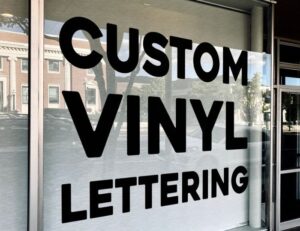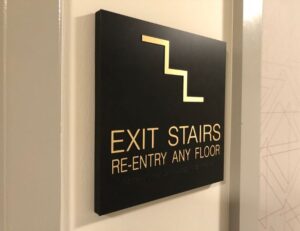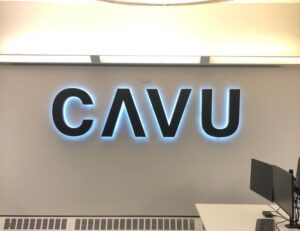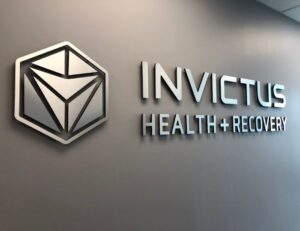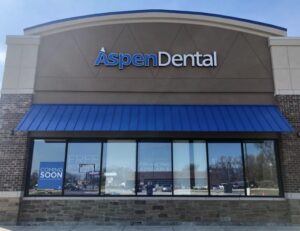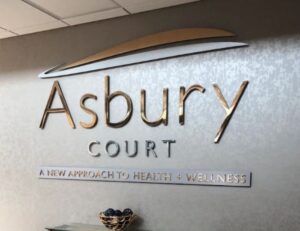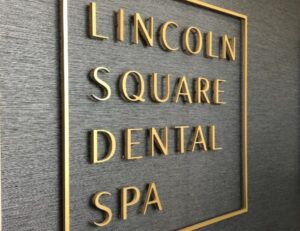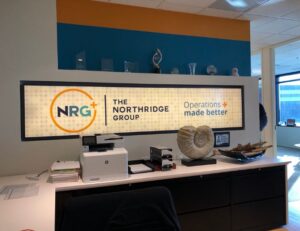Removing a commercial vinyl sign isn’t just a matter of pulling it off and tossing it away. It’s about carefully peeling, cleaning, and restoring your surface—so you don’t damage the substrate or leave behind adhesive messes. At Landmark Visibility Solutions, we’ve helped many businesses in Chicago, Evanston, Naperville, Schaumburg, and surrounding areas with signage rollouts and removals. In this article, we’ll share our expertise, step by step, to help you handle the process smoothly.
Understanding the Vinyl Sign Removal Process
Commercial vinyl signs are designed to withstand weather, UV exposure, and heavy traffic—which is exactly why their removal needs to be handled thoughtfully. The adhesive bonding these signs is strong and built to last, but that same durability can pose challenges when it’s time to remove.
Using improper removal techniques can lead to problems such as:
-
Residual adhesive and sticky patches that degrade aesthetics
-
Scratches, chips, or damage to glass, metal, or building surfaces
-
Uneven removal that leaves behind unsightly patches
At Landmark Visibility Solutions, we emphasize that proper preparation and methodical removal are key to preserving the integrity of your building’s surfaces and maintaining your brand’s professional appearance.
Step 1: Prepare the Environment and Gather Your Tools
Before you start peeling vinyl signage, take a moment to set up your workspace correctly. This helps make the job smoother and protects other surfaces from incidental damage.
Tools and materials you’ll need
Here’s a recommended list for a clean, efficient removal:
-
Plastic razors or scrapers (avoid metal blades that can scratch surfaces)
-
A heat gun or hairdryer to gently warm the vinyl and adhesive
-
Microfiber cloths or soft lint-free towels
-
Glass-safe adhesive remover (citrus-based or commercial grade)
-
A spray bottle with mild soapy water for final cleanup
The team at Landmark Visibility Solutions always uses professional-grade tools and materials designed for signage and graphics work, ensuring safe handling of commercial vinyl assets.
Preparing the workspace
Begin by clearing the area: remove nearby signage, vehicle wraps, or decorative elements that may be in your way. Cover nearby surfaces if needed to catch adhesive flakes or prevent overspray from cleaning solutions. A clean, well-lit environment will help you spot any areas of concern before they become bigger issues.
Step 2: Apply Gentle Heat to Loosen the Adhesive
Heating the vinyl and its adhesive layer helps make the peeling process much easier. The goal is to warm the surface without overheating or damaging underlying materials.
How to use heat safely
Hold your heat gun or hairdryer a few inches away from the vinyl sign surface and move it slowly in a circular motion across one section. Once you feel the material warm and start to peel away at an edge, you’re ready to begin lifting. If it still feels cold or rigid, apply a little more heat gently.
Why overheating is a problem
While it may be tempting to blast the surface for speed, excessive heat can warp materials, discolor signage, or even crack certain substrates. At Landmark Visibility Solutions, our experienced installers know how to balance temperature, time, and technique to protect your glass, aluminum, or other surfaces.
Step 3: Peel the Vinyl Slowly and Carefully
With the adhesive properly warmed, it’s time to remove the vinyl sign. The way you peel makes a big difference in how clean and damage-free the surface will be afterward.
Proper peeling technique
Start at a corner or edge and lift the vinyl back at about a 45-degree angle. Pull steadily and slowly. Work one section at a time, reapplying heat if you feel resistance. If any section begins to tear or leaves behind chunks of vinyl or adhesive, pause and reheat that area.
Tips for best results
-
Pull in the direction away from the surface rather than straight up
-
If the vinyl splits or leaves bits behind, reapply heat to loosen adhesive before resuming
-
For large signs, break the job into smaller, manageable pieces so the adhesive remains warm as you go
Landmark Visibility Solutions uses these same techniques when replacing or updating signage on storefronts, vehicle graphics, and building wraps—ensuring your brand remains clean and crisp throughout the process.
Step 4: Remove the Residual Adhesive and Clean the Surface
Even after the vinyl has been removed, there’s often a layer of adhesive or sticky residue left behind. Cleaning this properly is essential for a smooth, professional finish and for any future signage installation.
Cleaning the adhesive residue
Spray your adhesive remover directly onto the residue and allow it to sit for a few minutes to soften the glue. Then, using a microfiber cloth, gently wipe the surface until the sticky layer lifts. Avoid using harsh solvents like acetone or ammonia unless they’re recommended for that specific substrate.
Final surface cleaning
Once the adhesive is gone, follow up by spraying the area with a mild soapy water solution and wiping clean with a microfiber towel. Dry completely. This final step ensures your surface is free of residue, lint, and cleaning solution—making it ready for branding, repainting, or a fresh sign installation.
At Landmark Visibility Solutions, we believe a surface that is cleaned and prepped well is the foundation of any successful signage or graphics project.
Step 5: Inspect the Surface and Plan for Future Signage
After the sign’s been removed and the surface is clean, it’s smart to inspect the area for any hidden damage or wear. This is also a great time to plan for your next signage project.
Inspection checklist
-
Look for scratches, chips, or cracks in the substrate (glass, metal, or wall)
-
Check for discoloration or uneven fade where the sign covered a section while the rest of the surface aged
-
Ensure the surface is smooth and free of residual adhesive spots
If you notice damage that needs repair—especially on storefront glass or vehicle wraps—consider professional intervention. The team at Landmark Visibility Solutions offers full support for sign removal, surface restoration, and new signage installations.
Planning your next step
Once the surface is ready, decide whether you’re reinstalling signage, applying vehicle graphics, or refurbishing your brand look. Landmark Visibility Solutions specializes in exterior architectural signage, interior signage, vehicle wraps, and more for businesses in Chicago, Evanston, Naperville, Schaumburg, and nearby areas. You might also want to revisit your brand’s message and design to make sure your next sign update aligns with your current goals.
Why Choose Landmark Visibility Solutions for Your Signage Needs
Removing a vinyl sign might sound straightforward, but it’s easy to make mistakes that can affect your brand’s presentation and cost you time or money in restoration. At Landmark Visibility Solutions, we bring your signage and graphics vision to life with precision, quality, and professionalism.
Our full-service capabilities include consultation, art direction, marketing rollout, custom installations, and strategic brand implementation. We serve clients in Chicago, Evanston, Naperville, Schaumburg, and surrounding areas—bringing experienced signage solutions to businesses of all sizes. With us, you get more than just sign removal—you get a partner in visual communication and brand execution.
Ready to Elevate Your Brand? Contact Us Today!
If you’re planning to remove a commercial vinyl sign, update your storefront graphics, or launch a brand-new signage project, let Landmark Visibility Solutions guide the process. We’re ready to help you get the job done right—from start to finish.
Visit our Contact Page to request an estimate or ask any questions. Let us help you create signage and graphics that reflect your business with impact and clarity. Whether you’re in Chicago, Evanston, Naperville, Schaumburg, and nearby areas—we’ve got you covered.
Landmark Visibility Solutions—your trusted signage partner for professional, impactful graphics and sign installations in Chicago, Evanston, Naperville, Schaumburg, and more.



